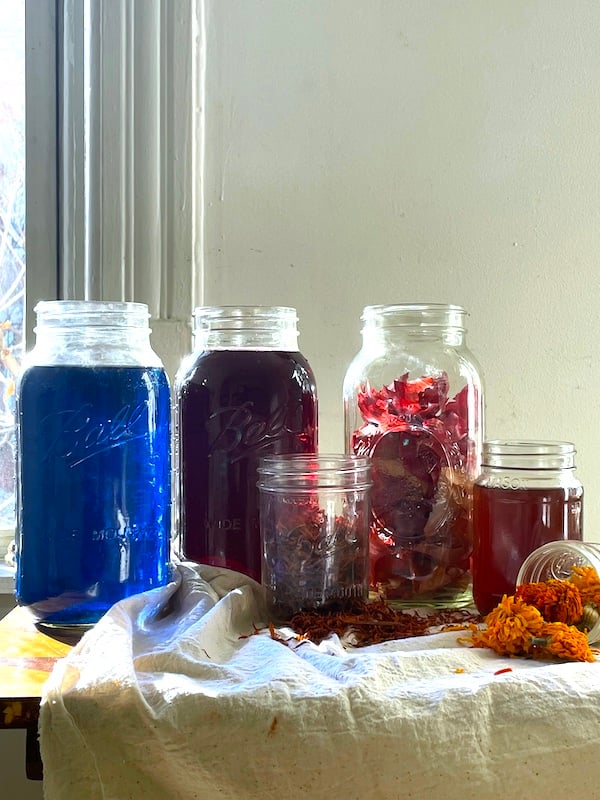
We get lots of emails from customers about challenges with dyeing and needing Botanical Colors’ President Kathy Hattori’s help. Why not share the learning so we can all benefit? From our inboxes to you, it’s simple: You Asked, Kathy Answered. Email questions@botanicalcolors with your plea for help!
YOU ASKED: Today I picked the last of the Goldenrod from our pasture and am wondering if it is possible to make an extract from the dye? I am familiar with lake pigments but understand that is not the same thing as an extract and I won’t be able use it for dyeing fabrics later. Doing a shallow dive into the internet on extracts it seems like that process involves solvents and high tech machines… is this right? Thanks for any insights you might have about this and any other recommendations for saving this dye for later use!
KATHY ANSWERED: If you intend to dye wool, you can make a lake pigment from goldenrod and then “split” the lake by manipulating the pH to “return” it to its dye state. The other method is to dry out the liquid in the dye bath and the dried color that remains is an extract. If you aren’t able to dry it, you can use a canning kettle and canning jars and “can” the dye bath. This forces air out of the jar and reduces the amount of mold or bacteria that can grow in the jar. Be sure to label and date it.
Additional reading:
Natural Colorants for Dyeing and Lake Pigments
Make Ink: A Forager’s Guide to Natural Inkmaking
Video From LIVE FEEDBACK FRIDAY: Natalie Stopka (and how to make lake pigments)
